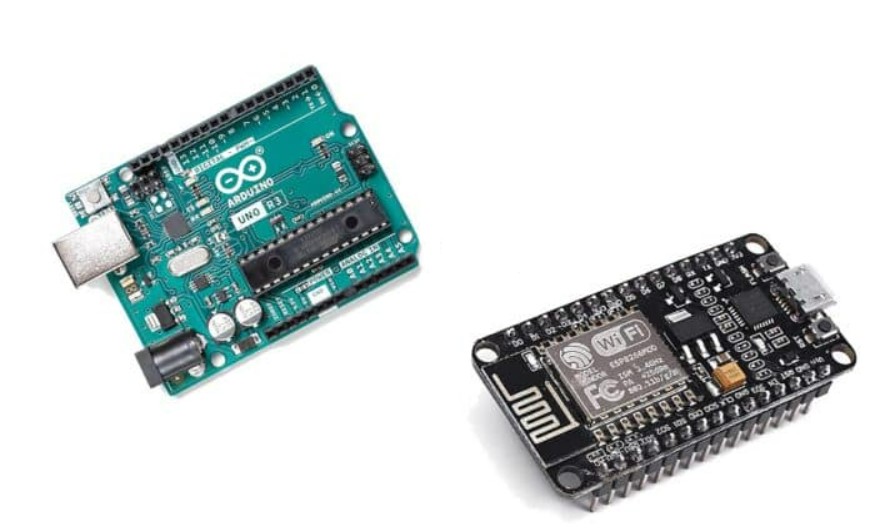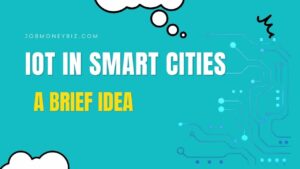Arduino Uno vs ESP8266 NodeMCU – In this comprehensive guide, we delve into the comparison of Arduino Uno vs ESP NodeMCU, two popular microcontroller boards. Discover their differences, applications, and which one suits your project best.
When it comes to the world of microcontrollers, Arduino Uno and ESP NodeMCU are two names that often pop up. They are both incredibly versatile and widely used in various electronics projects. However, choosing between them can be a daunting task, especially for beginners. In this article, we will compare Arduino Uno and ESP NodeMCU, shedding light on their features, capabilities, and best use cases to help you make an informed decision.
Arduino Uno vs ESP8266 NodeMCU: An Overview
Arduino Uno
Arduino Uno is a well-established and beginner-friendly microcontroller board. It is based on the Atmega328P microcontroller and is known for its simplicity and ease of use. Arduino Uno uses the Arduino IDE (Integrated Development Environment), which offers a user-friendly platform for programming and uploading code.
Arduino Uno is an excellent choice for projects that require basic control and interaction with sensors, LEDs, and other electronic components. It has a wide community of users and extensive documentation, making it ideal for beginners who are just getting started with microcontrollers.
ESP NodeMCU
ESP NodeMCU, on the other hand, is based on the ESP8266 microcontroller. What sets it apart is its built-in Wi-Fi capability, which makes it a powerful choice for IoT (Internet of Things) projects. NodeMCU can be programmed using the Arduino IDE as well, making it accessible to those familiar with Arduino.
NodeMCU’s Wi-Fi connectivity opens up a world of possibilities for remote monitoring and control applications. It is particularly suited for projects involving home automation, smart devices, and data logging, where internet connectivity is crucial.
Hardware Comparison
Processing Power
Arduino Uno is equipped with an 8-bit Atmega328P microcontroller running at 16MHz. While it’s capable of handling many tasks, it may struggle with complex computations and heavy data processing.
In contrast, ESP NodeMCU boasts a more powerful 32-bit Tensilica Xtensa LX106 microcontroller running at 80MHz. This makes it better suited for tasks that require more processing power, especially those involving Wi-Fi communication and data analysis.
Connectivity
One of the key differences between these two boards is connectivity. Arduino Uno lacks built-in Wi-Fi or Bluetooth capabilities. If your project requires wireless communication, you’ll need to add external modules, which can be more complex.
NodeMCU, as mentioned earlier, comes with built-in Wi-Fi, making it a breeze to connect to the internet and other devices. This is a significant advantage for IoT projects that rely on internet connectivity.
Input/Output Pins
Arduino Uno offers 14 digital input/output pins and 6 analog input pins. These pins are sufficient for many projects, including simple robotics and automation.
NodeMCU provides a similar number of pins, but it also has some pins with additional functionalities, such as analog-to-digital conversion (ADC) and Pulse Width Modulation (PWM). These extra features can be valuable in more advanced projects.
Applications
Arduino Uno Applications
- LED Blinking Projects
- Temperature and Humidity Monitoring
- Simple Robotics
- Home Automation (with additional components)
- Beginner Tutorials and Learning
ESP8266 NodeMCU Applications
- IoT Devices (e.g., Smart Thermostats, Smart Plugs)
- Weather Stations with Online Data Logging
- Home Security Systems
- Web-Controlled Robots
- Data Visualization Projects
Arduino Uno vs ESP8266 NodeMCU: Which Should You Choose?
Choosing between Arduino Uno and ESP NodeMCU depends on the specific requirements of your project.
- If you are a beginner looking for a user-friendly platform to start learning about microcontrollers, Arduino Uno is an excellent choice. Its simplicity and extensive community support make it an ideal starting point.
- On the other hand, if your project involves internet connectivity, data logging, or IoT applications, ESP NodeMCU’s built-in Wi-Fi capabilities make it a compelling option. It offers more processing power and is well-suited for projects that require remote control and monitoring.
Remember that both boards have their strengths and weaknesses, and the choice ultimately comes down to your project’s unique needs.
FAQs
Q: Can I use Arduino Uno for IoT projects?
A: While it’s possible to use Arduino Uno for IoT projects, ESP NodeMCU with built-in Wi-Fi is generally more suitable due to its internet connectivity.
Q: Is programming Arduino Uno the same as ESP8266 NodeMCU?
A: Both boards can be programmed using the Arduino IDE, so the programming experience is similar.
Q: Which board is more beginner-friendly?
A: Arduino Uno is often considered more beginner-friendly due to its simplicity and extensive documentation.
Q: Does ESP NodeMCU require additional components for Wi-Fi?
A: No, ESP NodeMCU comes with built-in Wi-Fi, so you don’t need additional components for wireless connectivity.
Q: Can I use NodeMCU for simple LED blinking projects?
A: Yes, NodeMCU can be used for simple projects like LED blinking, and its Wi-Fi capabilities open up more possibilities.
Conclusion
In the Arduino Uno vs. ESP NodeMCU battle, there is no clear winner, as both boards have their strengths and are suitable for different types of projects. Arduino Uno is perfect for beginners and basic electronics projects, while ESP NodeMCU shines in IoT applications with its built-in Wi-Fi capability. When choosing between them, consider the specific requirements of your project and your familiarity with each board. Whichever you choose, you’re sure to embark on an exciting journey in the world of microcontrollers.
Anupam M is blogging on this site on different aspects of technology, job, and business. He is an experienced IT professional with an Engineering degree from a premier NIT. Know more




